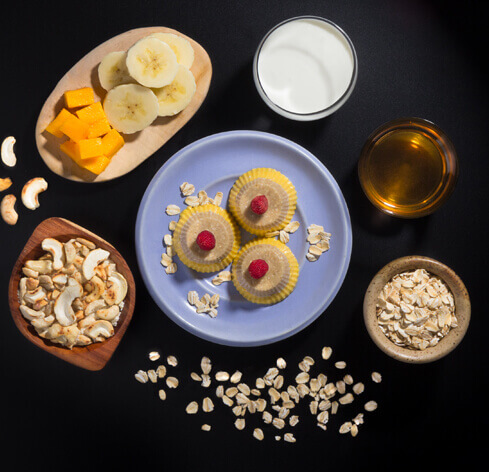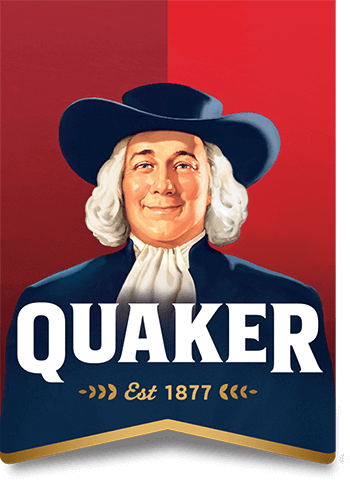1. Felzenszwalb I, da Costa Marques MR, Mazzei JL, Aiub CA. Toxicological evaluation of Euterpe edulis: a potential superfruit to be considered. Food Chem Toxicol. 2013 Aug;58:536-44.
2. Gullón B, Gullón P, Tavaria FK, Yanez R. Assessment of the prebiotic effect of quinoa and amaranth in the human intestinal ecosystem. Food Funct. 2016 Sep 14;7(9):3782-3788.
3. US Department of Agriculture, Agricultural Research Service, Nutrient Data Laboratory. USDA National Nutrient Database for Standard Reference, Release 28 (Slightly revised). Version Current: May 2016. Available at: http://www.ars.usda.gov/ba/bhnrc/ndl
4. Korczak R, Kamil A, Fleige L, Donovan SM, Slavin JL. Dietary fiber and digestive health in children. Nutr Rev. 2017 Apr 1;75(4):241-259.
5. Stephen AM, Champ MM, Cloran SJ, Fleith M, van Lieshout L, Mejborn H, Burley VJ. Dietary fibre in Europe: current state of knowledge on definitions, sources, recommendations, intakes and relationships to health. Nutr Res Rev. 2017 Dec;30(2):149-190.
6. Chu, YiFang. Oats nutrition and technology. West Sussex : Wiley Blackwell, 2014.
7. US Food & Drug Administration. FOOD LABELING. Specific Requirements for Health Claims: Soluble fiber from certain foods and risk of coronary heart disease.21CFR101.81. May 2017. Available at: https://www.accessdata.fda.gov/scripts/cdrh/cfdocs/cfcfr/CFRSearch.cfm?fr=101.81
8. Otten JJ, Hellwig JP, Meyers LD (editors). Dietary Reference Intakes: The Essential Guide to Nutrient Requirements. Washington, DC: The National Academies Press; 2006.
9. Hernández, J. La quinua, una opción para la nutrición del paciente con diabetes mellitus. Revista Cubana de Endocrinologia 2015;26(3):304-312
10. Filho AM, Pirozi MR, Borges JT, Pinheiro Sant'Ana HM, Chaves JB, Coimbra JS. Quinoa: Nutritional, functional, and antinutritional aspects. Crit Rev Food Sci Nutr. 2017 May 24;57(8):1618-1630.
11. Caselato Sousa V, et al. State of Knowledge on Amaranth Grain: A Comprehensive Review. J Food Sci. 2012; 77(4):R93-104
12. Dhanavath S, et al. Nutritional and Nutraceutical properties of Triticum dicoccum wheat and its health benefits: An overview. J Food Sci. 2017;82(10):2243-2250
13. Whole Grain Council. Rye + Triticale August Grains of the Month. May 2018. Available at: https://wholegrainscouncil.org/whole-grains-101/easy-ways-enjoy-whole-grains/grain-month-calendar/rye-triticale-august-grains-month
14. Marcinek K, Krejpcio Z. Chia seeds (Salvia hispánica): health promoting properties and therapeutic applications a review. Rocz Panstw Zakl Hig. 2017;68(2):123-129.
15. Valdivia-LOpez MA, Tecante A. Chia (Salvia hispánica): A Review of Native Mexican Seed and its Nutritional and Functional Properties. Adv Food Nutr Res. 2015;75:53-75.
16. de Souza Ferreira C, dd Sousa Fomes Lde F, da Silva GE, Rosa G. Effect of chia seed (salvia hispanica l.) consumption on cardiovascular risk factors in humans: a systematic review. Nutr Hosp. 2015 Nov 1;32(5):1909-18.
17. Cardoso CA, Oliveira GMM de, Gouveia L de AV, Moreira ASB, Rosa G. The effect of dietary intake of sesame (Sesamumindicum L.) derivatives related to the lipid profile and blood pressure: A systematic review. Critical reviews in food science and nutrition. 2018;58(1):116-125.
18. Majdalawieh AF, Massri M, Nasrallah GK. A comprehensive review on the anti-cancer properties and mechanisms of action of sesamin, a lignan in sesame seeds (Sesamum indicum). European journal of pharmacology. 2017;815:512-521.
19. Kajla P, Sharma A, Sood DR. Flaxseed-a potential functional food source. J Food Sci Technol. 2015 Apr;52(4):1857-71. doi: 10.1007/s13197-014-1293-y.
20. Parikh M, Netticadan T, Pierce GN. Flaxseed: Its Bioactive Components and their Cardiovascular Benefits. Am J Physiol Heart Circ Physiol. 2017 Nov 3:ajpheart.00400.2017. doi: 10.1152/ajpheart.00400.2017.
21. Cohen C, Silva CS, Vannucchi H. Funcoes plenamente reconhecidas dos nutrientes Vitamina E. Serie de Publicacoes ILSI Brasil. Sao Paulo: ISLI Brasil, 2014.
22. Guo S, Ge Y, Na Jom K. A review of phytochemistry, metabolite changes, and medicinal uses of the common sunflower seed and sprouts (Helianthus annuus L.). Chemistry Central journal. 2017;11(1):95.
23. Vannice G, Rasmussen H. Position of the academy of nutrition and dietetics: dietary fatty acids for healthy adults. J Acad Nutr Diet. 2014 Jan;114(1):136-53.
24. Siano F, Stracia MC, Paolucci M, et al. Physico-chemical properties and fatty acid composition of pomegranate, cherry and pumpkin seed oils. J Sci Food Agric 2016;30(96):1730-5.
25. Baranowska M, Bartoszek A. Antioxidant and antimicrobial properties of bioactive phytochemicals from cranberry. Postepy Hig Med Dosw (Online). 2016 Dec 31;70(0):1460-1468.
26. Michalska A, Lysiak G. Bioactive Compounds of Blueberries: Post-Harvest Factors Influencing the Nutritional Value of Products. Int J Mol Sci. 2015 Aug 10;16(8):18642-63.
27. Skrovankova S. et al. Bioactive Compounds and Antioxidant Activity in Different Types of Berries. Int J Mol Sci. 2015;16(10):24673-706.
28. Verma R, Gangrade T, Punasiya R, Ghulaxe C. Rubus fruticosus (blackberry) use as an herbal medicine. Pharmacogn Rev. 2014 Jul;8(16):101-4.
29. Zia-Ul-Haq M, Riaz M, De Feo V, Jaafar HZ, Moga M. Rubus fruticosus L.: constituents, biological activities and health related uses. Molecules. 2014 Jul 28;19(8):10998-1029
30. Kamil A, Chen CY. Health benefits of almonds beyond cholesterol reduction. J Agric Food Chem. 2012 Jul 11;60(27):6694-702.
31. Toomer OT. Nutritional chemistry of the peanut (Arachis hypogaea). Crit Ver Food Sci Nutr. 2017 Jun 29:1-12.
32. Del Gobbo LC, Falk MC, Feldman R, Lewis K, Mozaffarian D. Effects of tree nuts on blood lipids, apolipoproteins, and blood pressure: systematic review, meta-analysis, and dose-response of 61 controlled intervention trials. Am J Clin Nutr. 2015 Dec;102(6):1347-56.




